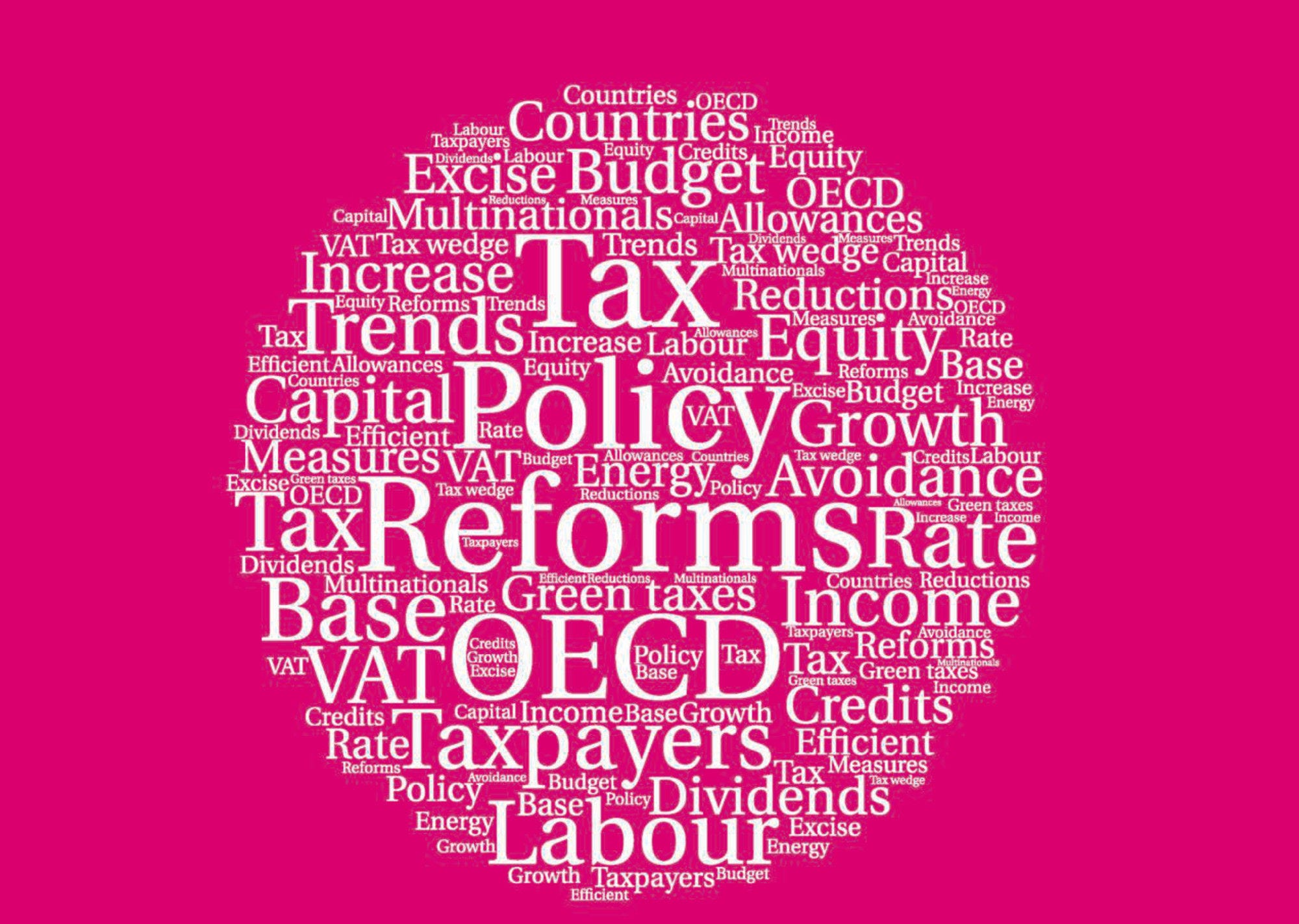This is the fourth edition of Tax Policy Reforms: OECD and Selected Partner Economies, an annual publication that provides comparative information on tax reforms across countries and tracks tax policy developments over time. The report covers the latest tax policy reforms in all OECD countries, as well as in Argentina, Indonesia and South Africa. Monitoring tax policy reforms and understanding the context in which they were undertaken are crucial to informing tax policy discussions and to supporting governments in the assessment and design of tax reforms.
Tax Policy Reforms 2019

Abstract
Executive Summary
This is the 2019 edition of Tax Policy Reforms: OECD and Selected Partner Economies, an annual publication that provides comparative information on tax reforms across countries and tracks tax policy developments over time. The report covers the latest tax policy reforms in all OECD countries, as well as in Argentina, Indonesia and South Africa.
Fewer countries have introduced comprehensive tax reform packages in 2019 compared to previous years. The most comprehensive tax reform was introduced in the Netherlands. Other significant tax changes are being implemented in Lithuania (labour taxes), Australia (personal and corporate income taxes), Italy (corporate income tax) and Poland (personal and corporate income taxes). In other countries, tax reforms in 2019 have been less significant and have often been undertaken in a piecemeal fashion. The challenges ahead, including the prospects of weakening economic growth in some countries, income and wealth inequality, the changing nature of work as well as climate change will require bolder tax reforms, implemented in conjunction with other structural reforms.
The report identifies a number of common tax reform trends across countries:
In the area of personal income taxes (PIT), the report confirms that countries are continuing to cut labour taxes, after several years of PIT increases following the crisis. In 2019, most of the countries that have introduced PIT reforms are cutting PIT rates and narrowing PIT bases. These reforms are expected to reduce tax revenues, at least in the short term. A stated rationale for these reforms among many countries is to support employment and those on low and middle incomes. While this trend represents a broad continuation of PIT reforms in recent years, the previous focus on tax rate cuts has slowed while base narrowing has intensified. Regarding the taxation of personal capital income, reforms have tended towards modest increases in tax rates on capital gains and dividends. Some countries have also expanded tax incentives to support pension savings and small savers.
With respect to social security contributions (SSCs), reforms have been modest in 2019 and SSCs remain high in many countries. Broadly, SSC reforms in 2019 tended to focus on SSC rate cuts rather than increases and were evenly split between base narrowing and broadening measures.
Corporate income tax (CIT) rate cuts have continued in 2019, but these rate reductions have been less significant than the ones introduced in 2018. Interestingly, the countries that are introducing the most significant CIT rate reductions tend to be those that exhibit higher initial CIT rates, leading to further convergence in CIT rates across countries. Many countries have also reinforced the generosity of their corporate tax incentives to stimulate investment and innovation.
With regard to international taxation, efforts to protect CIT bases against corporate tax avoidance have continued with the adoption of significant reforms in line with the OECD/G20 Base Erosion and Profit Shifting (BEPS) project. The tax challenges arising from the increasing digitalisation of the economy continue to give rise to concern among countries. Efforts to achieve a consensus-based multilateral solution to address those challenges are ongoing, but some countries are considering or have implemented interim measures to tax certain revenues from digital services in the meantime.
The stabilisation of standard value-added tax (VAT) rates observed across countries in the last couple of years is continuing. High standard VAT rates in many countries have limited the room for additional rate increases without generating potentially high efficiency and equity costs. Instead, many countries have concentrated their efforts on the fight against VAT fraud to raise additional revenues and strengthen the functioning and fairness of VAT systems. Importantly, some of the recent anti-fraud measures, especially the expansion of the domestic reverse charge mechanism and split payments, involve major changes to the way VAT has traditionally been collected. In addition, significant efforts are being made to ensure the effective taxation of cross-border trade. Partly to compensate for high standard VAT rates, a number of countries have expanded the scope of their reduced VAT rates. While these measures are typically justified as a way to enhance fairness or support specific industries, evidence has shown that they tend to be poorly targeted policy instruments. Trends in excise duties show continuing tax increases to deter harmful consumption, focused in particular on tobacco products and sugar-sweetened beverages. Finally, new trade tariffs have been introduced, which could lead to further escalations in the future.
The pace of environmentally related tax reform has slowed. In particular, efforts to strengthen energy taxes (fuel excise and carbon taxes) have weakened. Compared to previous years, far fewer countries have introduced reforms to extend the use of energy taxes and increase tax rates. On the contrary, several countries have lowered taxes on energy use or reversed reforms that had been introduced to better align energy taxation with climate costs. These findings seem to conflict with countries’ climate and environmental preservation objectives and their desire to improve the efficiency of their tax systems. Aside from energy taxation, taxation in the transport sector has also seen very limited progress. Some of the reforms in that area have involved the taxation of less traditional tax bases including air travel and road use. Finally, progress on other environmentally related taxes, such as taxes on waste production, plastic or the use of chemicals, has been exceptionally limited.
Finally, the property tax reforms introduced in 2019 were limited in number and in scope, confirming that the revenue-raising and equity-enhancing potential of property taxes remains under-utilised. Some of the reforms introduced in 2019 have focused on increasing taxes on high-value immovable property.
The report is structured as follows: Chapter 1 gives an overview of the macroeconomic background in 2018; Chapter 2 presents the latest trends in tax revenues and tax mixes; and Chapter 3 gives an overview of the latest tax reform trends.












